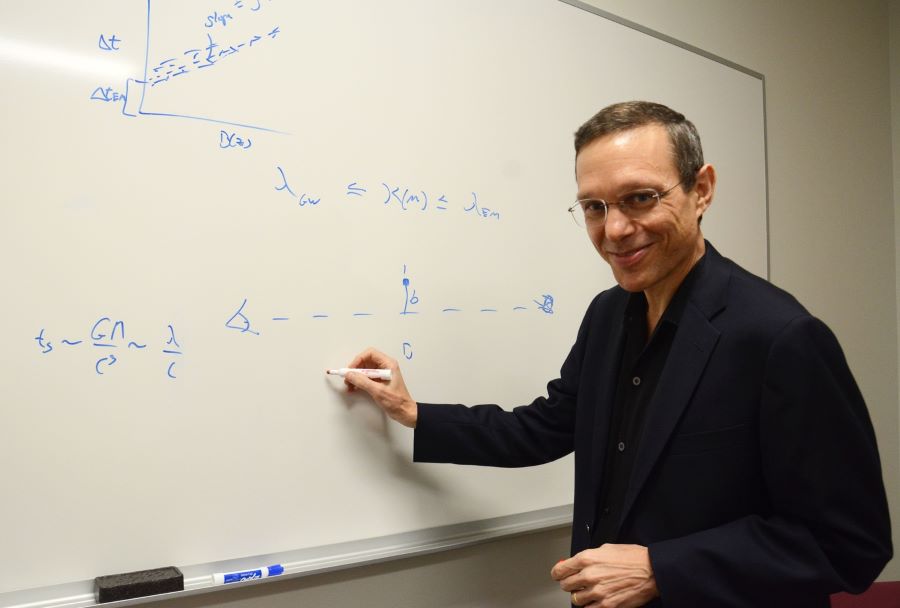Scientist proposes revolutionary fuel-free propulsion system based on negative mass
Israeli-American astrophysicist Avi Loeb is advancing a bold new concept that could revolutionize space travel: a propulsion system that operates without any need for fuel, based on the manipulation of negative mass.
While the idea sounds like science fiction, Loeb, a professor of science at Harvard University, presents it as a serious scientific hypothesis rooted in Einstein’s theory of gravity and modern cosmology.
“Einstein’s general theory of relativity permits the existence of negative mass, as long as it satisfies the equivalence principle,” Loeb explains in a Medium post.
More to read:
Philosopher proposes that advanced alien civilizations use stars as giant spaceships
This principle equates gravitational mass — which defines how an object interacts with gravity — with inertial mass — which determines how it reacts to forces. In theory, a negative gravitational mass would come with an equally negative inertial mass, enabling strange but predictable behaviors.
To date, negative mass has never been observed in nature. But the scientist argues this may simply be due to the Universe not naturally producing the conditions necessary to create it — a limitation that may not apply to advanced civilizations.
“If extraterrestrial scientists understood dark energy — the force behind the accelerating expansion of the Universe — and found a way to bottle it, they could manufacture a negative-mass object,” he said.
More to read:
Alien civilizations – if they existed – were destroyed by climate change
The behavior of such an object would be counterintuitive. “If a kid pulls on a string tied to a negative-mass container, the container would move in the opposite direction — away from the pull,” Loeb says.
“But if the string is released, the object would fall down like a rock, because its negative gravitational mass responds to gravity the same way positive mass does.”
Loeb envisions harnessing this paradoxical behavior to build a new kind of vehicle. In his scenario, a spacecraft could be designed with equal parts positive and negative mass. The passengers would only need to pull on a string connecting them to the negative mass. This tension would cause the entire vehicle to accelerate — without consuming energy.
The key to such a system is balance: because the energy and momentum of the negative mass cancel out those of the positive mass, the vehicle can accelerate without expending fuel. “As long as the separation between the masses remains fixed, the net energy stays constant,” he adds.
More to read:
Scientist warns of danger from shaking hands with aliens – this could lead to mutual annihilation
Launching such a craft into space would become trivial. No rocket fuel, no combustion — just a system with net zero mass floating effortlessly in gravity. “For extraterrestrial space agencies which use negative mass containers, our flagship rocket Starship would appear as a complete waste of mass and energy,” Loeb said.
While the idea might seem fantastical, it has support in the scientific literature. Researchers like Robert Forward (1990), Richard Price (1992), and Geoffrey Landis (2019) have explored similar concepts, noting that acceleration could be controlled simply by adjusting the tension between the masses.

Professor Avi Loeb. Credit: Harvard University
Herman Bondi, in a 1957 paper, even proposed that a gravitational interaction alone — with no physical string — could mimic this effect in certain cases.
Working with negative mass comes with its own challenges: These objects run away from you when you try to pull them, according to Loeb. He suggests using electric or magnetic fields to manipulate negative-mass containers in a factory setting, especially if they’re electrically charged. Still, much remains hypothetical — including how one might actually create or contain negative mass.
More to read:
To survive interstellar travel, spacecraft need to be small and crewed by machines
Loeb also speculates that this propulsion mechanism could offer an explanation for the strange behavior of some Unidentified Anomalous Phenomena (UAPs). While the Pentagon’s All-Domain Anomaly Resolution Office (AARO) has explained 97% of reported UAPs as conventional objects, Loeb says that even a tiny fraction of anomalies could be profound. “Even if one in a million UAPs is propelled by a negative-mass engine, that would be the most dramatic discovery in the history of physics.”
Such an object would appear to defy the laws of motion as we know them — floating silently, maneuvering without exhaust, and accelerating without consuming energy.
Loeb's proposal could upend the current direction of space research, which is heavily invested in long-term projects like the $10 billion Habitable Worlds Observatory — a mission prioritized by the U.S. astronomy community to search for microbial life on distant exoplanets, but not expected before the 2040s.
More to read:
Astronomers pioneer a new way to detect alien radio signals
The scientist, who is also the founder and director of the Galileo Project for the Systematic Scientific Search for Evidence of Extraterrestrial Technological Artifacts, suggests a far more immediate and transformative possibility: the discovery of negative-mass vehicles operating near Earth.
Such a breakthrough, Loeb argues, would radically shift scientific priorities toward studying advanced technologies already in our cosmic backyard.
Avi Loeb is one of the few astrophysicists who believe the mysterious 'Oumuamua object that crossed the Solar System in 2017 could be an alien spacecraft.







